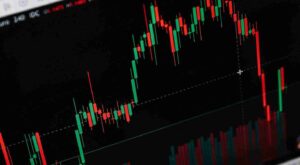
[ad_1]
Live Forex Spreads
Do you want to unlock the secrets behind successful forex trading? Are you aware that understanding live forex spreads could be the key to maximizing your trading profits? In this comprehensive guide, we will unveil the mysteries surrounding live forex spreads and explore how they can impact your trading performance. If you’ve ever wondered about the 10 secrets behind live forex spreads and if you’re missing out on valuable opportunities, you’ve come to the right place. Get ready to revolutionize your trading strategy as we delve into the intricacies of live forex spreads and discover the hidden gems of the forex market.
What are Forex Spreads?
Before we dive into the secrets of live forex spreads, let’s first understand what they are and their role in forex trading. In simple terms, forex spreads refer to the difference between the bid and ask prices of a currency pair. When you trade forex, you will encounter two prices for each currency pair – the bid price and the ask price. The bid price represents the highest price a buyer is willing to pay for a currency, while the ask price represents the lowest price a seller is willing to accept. The difference between these two prices is known as the spread, which acts as a transaction cost for traders.
There are two main types of spreads in forex trading: fixed spreads and variable spreads. Fixed spreads remain constant regardless of market conditions, providing traders with certainty regarding transaction costs. On the other hand, variable spreads fluctuate based on market conditions, such as volatility and liquidity. While fixed spreads offer stability, variable spreads offer the potential for better pricing during favorable market conditions.
Live forex spreads bring real-time pricing into the equation, allowing traders to make decisions based on the current market conditions. Unlike fixed spreads, which are predetermined by brokers, live spreads are influenced by the supply and demand dynamics of the market. By understanding live spreads, traders gain valuable insights into the current pricing environment and can adjust their trading strategies accordingly. This flexibility and adaptability are crucial for traders aiming to capitalize on market movements and profit from changes in currency prices.
Several factors influence live forex spreads. Understanding these factors can help traders anticipate and navigate spread variations, enabling them to make informed trading decisions. Let’s explore some of the key factors that impact live forex spreads:
Market Volatility: Spreads tend to widen during periods of high market volatility. Increased volatility implies higher risk and uncertainty, leading to wider bid-ask spreads. Consequently, traders may need to pay more to enter or exit positions during volatile market conditions.
Liquidity: Liquidity refers to the ease with which an asset can be bought or sold without causing significant price movements. Higher liquidity generally results in tighter spreads, as there are more buyers and sellers in the market. Conversely, lower liquidity can lead to wider spreads, as there may be fewer participants willing to trade at a specific price.
Economic Events: Major economic events, such as central bank announcements, GDP releases, and employment reports, can significantly impact currency prices and subsequently influence spreads. Before and after such events, spreads may widen as market participants brace for potential volatility.
Trading Sessions: Different trading sessions around the world impact spreads as well. For example, during the overlap of the New York and London sessions, when the most significant trading volumes occur, spreads tend to tighten due to increased market activity.
Broker Policies: Each broker may have its own policies and fee structures, which can affect live forex spreads. It’s essential to research and select a reputable broker that offers competitive spreads and fair trading conditions.
Understanding these factors and their impact on live forex spreads puts traders in a better position to assess market conditions, manage risk, and seize profitable trading opportunities
Now that we have a solid foundation on the fundamentals of live forex spreads, let’s unveil the 10 secrets that can elevate your understanding and utilization of live spreads:
Secret 1: Competitive pricing and execution quality
Trusted brokers with direct access to liquidity providers often offer competitive pricing and execution quality, resulting in lower spreads and faster order execution. Choosing a broker with such advantages can significantly impact your trading outcome.
Secret 2: The impact of currency pairs on spreads
Different currency pairs have varying levels of liquidity and popularity, which affects the spreads. Major currency pairs, such as EUR/USD and GBP/USD, usually have tighter spreads, while exotic currency pairs may have wider spreads due to lower liquidity.
Secret 3: Spread variation during different market conditions
As mentioned earlier, spreads tend to fluctuate based on market conditions. During times of high volatility and low liquidity, spreads tend to widen, representing the increased risk and potential costs of trading.
Secret 4: The role of liquidity providers
Liquidity providers are financial institutions or individuals that facilitate the buying and selling of financial assets in the market. They play a crucial role in determining live forex spreads as they can influence the availability and cost of liquidity. Understanding the role of liquidity providers can provide insights into spread dynamics.
Secret 5: How brokers determine spreads
Brokers use different models to determine spreads. Some brokers offer raw spreads, passing on the prices directly from liquidity providers with a fixed commission. Others may widen spreads to generate revenue. It’s important to understand your broker’s pricing model to make informed trading decisions.
Secret 6: Understanding the bid-ask spread
The bid-ask spread represents the difference between the highest price a buyer is willing to pay and the lowest price a seller is willing to accept. It’s important to monitor bid-ask spreads, as tighter spreads can mean lower transaction costs and potentially higher profitability.
Secret 7: Impact of news and economic announcements on spreads
Major news releases and economic announcements can create volatility in the markets, resulting in wider spreads. Traders must be aware of upcoming events and their potential impact on spreads to minimize risk and avoid unfavorable trading conditions.
Secret 8: Strategies to minimize spreads and enhance profitability
Traders can employ various strategies to minimize spreads and increase profitability. These strategies may include scalping, using limit orders, and trading during times of high liquidity. Implementing such techniques requires careful consideration to optimize trading results.
Secret 9: Risk management and spread considerations
Understanding spreads is a vital component of risk management in forex trading. Spread costs should be factored into the overall risk-reward analysis of a trade. Incorporating spread considerations into your risk management strategy can provide a more accurate assessment of potential profits or losses.
Secret 10: Choosing the right broker for optimal spreads
Selecting the right broker is crucial as it can directly impact your trading costs. Consider factors such as spreads, commissions, trading conditions, and reputation when choosing a broker to ensure you have access to optimal spreads and a trusted trading environment.
By understanding and implementing these secrets into your trading strategy, you can gain a competitive edge and unlock the full potential of live forex spreads.
Now that you’re armed with the knowledge of the secrets behind live forex spreads, let’s explore strategies to maximize your trading potential:
1. Utilizing stop-loss and take-profit orders
Placing stop-loss and take-profit orders is essential for risk management and ensuring consistent trading discipline. These orders not only protect your capital but also allow you to lock in profits at predetermined levels.
Utilize advanced trading platforms that offer spread monitoring tools. These tools can provide real-time information on spreads, allowing you to analyze historical spreads and make informed trading decisions.
3. Calculating spread costs and trade profitability
It’s crucial to calculate the impact of spreads on your trading performance. By considering spread costs in your profit and loss calculations, you can gain a clearer understanding of trade profitability, enabling you to make better-informed decisions.
FAQs on Forex Spreads
What are the advantages of trading with narrow spreads?
Trading with narrow spreads offers cost efficiency, reducing transaction costs and increasing profit potential. Narrow spreads also indicate market liquidity and enhance trade execution speed.
How does market liquidity affect Forex spreads?
Market liquidity directly influences bid-ask spreads. Higher liquidity results in narrower spreads, offering better trading conditions. Lower liquidity can lead to wider spreads, potentially impacting trade profitability.
Is it essential to consider historical spread data when trading Live Forex Spreads?
Yes, examining historical spread data is crucial for effective risk management. It helps traders understand past market conditions, identify patterns, and make informed decisions based on historical spread trends.
What factors contribute to the widening of spreads?
Spreads can widen due to increased market volatility, low liquidity, or major economic events. Understanding these factors is essential for traders to anticipate and navigate spread fluctuations successfully.
How do I choose the right broker based on spread costs?
When evaluating spread costs, consider factors like broker reputation, reliability, and the types of spreads offered. A reliable broker with transparent pricing and competitive spreads can positively impact your overall trading experience.
Are there specific strategies for low spread trading during economic events?
Yes, traders can adopt strategies like placing limit orders, monitoring economic calendars, and staying informed about news events. These tactics can help identify and capitalize on low spread trading opportunities during economic events.
Conclusion
In conclusion, mastering the 10 Secrets Behind Live Forex Spreads is essential for any trader aiming to optimize their trading experience. By understanding the dynamics of spreads, leveraging market insights, and adopting effective strategies, you can stay ahead in the ever-evolving world of Forex trading.
Learn more about managing risks in Forex trading with our guide on Effective Risk Management Strategies. Explore the impact of economic events on Forex spreads at Investopedia. Dive deeper into the benefits of trading with narrow spreads in our article on The Advantages of Narrow Spreads. For real-time market insights and analysis, check out ForexFactory. Discover the correlation between liquidity and bid-ask spreads in our guide on Understanding Market Liquidity. Stay updated on the latest economic news affecting Forex markets at Bloomberg. Evaluate different brokers and their spread costs by reading our article on Choosing the Right Forex Broker. For in-depth historical spread data, visit TradingView.
Explore common misconceptions about spreads and the truth behind them in Debunking Spread Myths.
Enhance your low spread trading strategies with insights from DailyFX.
These links should provide additional valuable information and resources for your readers interested in the topic.
[ad_2]






